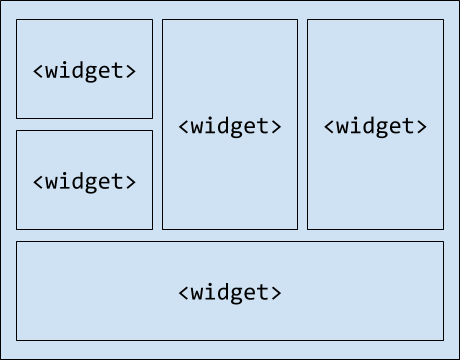Using the Grid geometry manager
The Grid geometry manager is considered the more versatile of the three geometry managers. It directly reassembles the grid concept that is commonly used in user interface design—a two-dimensional table divided into rows and columns, where each cell represents the space available for a widget.
Getting ready
We will demonstrate how to use the Grid geometry manager to achieve the following layout:

This can be represented as a 3 x 3 table, where the widgets in the second and third columns span two rows and the widget at the bottom row spans three columns.
How to do it…
As we did in the preceding recipe, we will use five labels with different backgrounds to illustrate the distribution of the cells:
import tkinter as tk
class App(tk.Tk):
def __init__(self):
super().__init__()
label_a = tk.Label(self, text="Label A", bg="yellow")
label_b = tk.Label(self, text="Label B", bg="orange")
label_c = tk.Label(self, text="Label C", bg="red...





























































